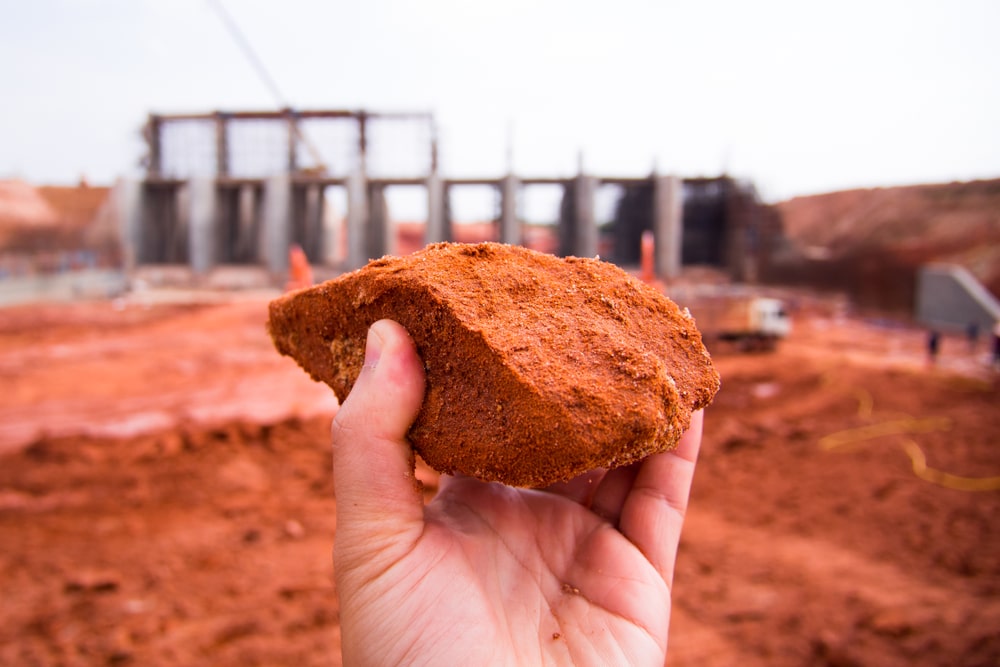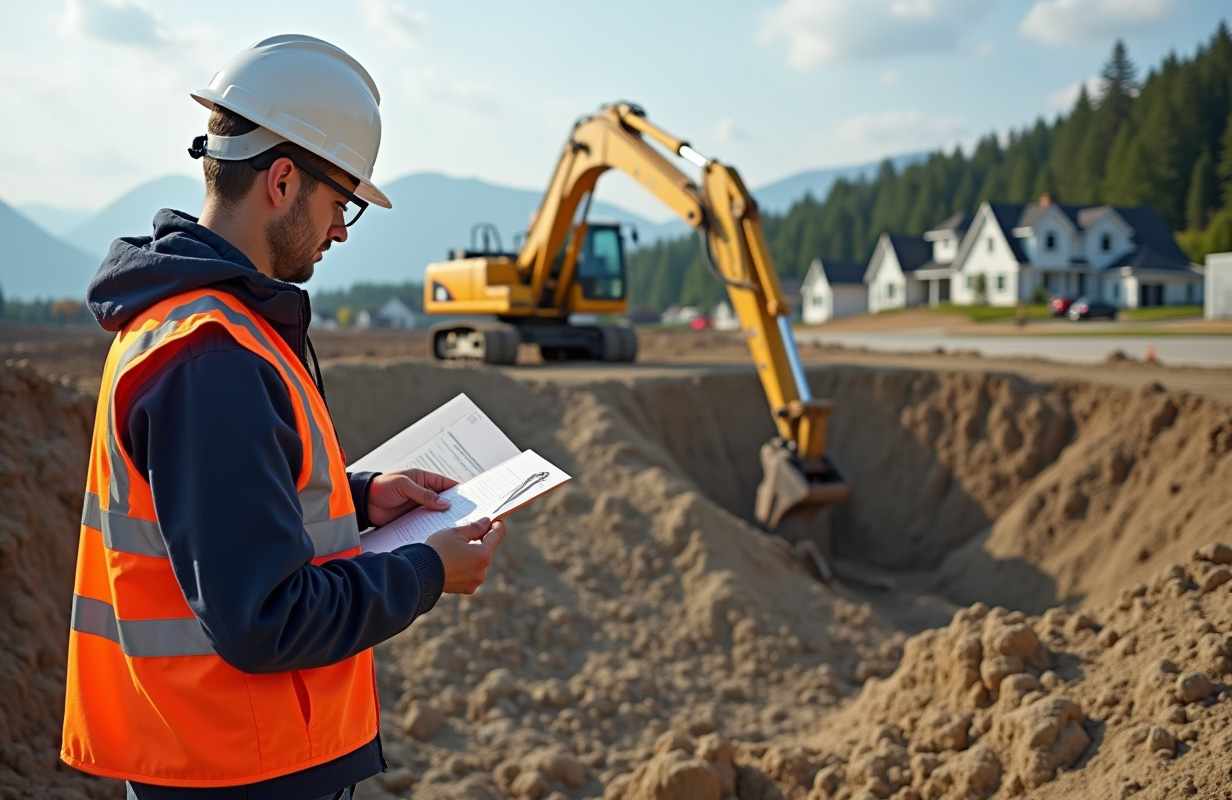Everything You Required to Know About Geotechnical Engineering for Your Following Task
The Value of Geotechnical Engineering in Dealing With Environmental Obstacles and Enhancing Building Security
Geotechnical design offers as a foundation in the intersection of ecological stewardship and building and construction safety and security, supplying essential understandings right into the actions of soil and rock under various problems. By executing critical site investigations and customized reduction measures, geotechnical engineers play a vital duty in guarding both human lives and ecological honesty.

Role of Geotechnical Design
Geotechnical design plays a crucial role in the design and construction of framework by dealing with the actions of dirt and rock products under numerous problems. This field of design is crucial for recognizing the communication in between frameworks and the ground, that includes determining the load-bearing ability of soil, analyzing security, and anticipating potential negotiation or failing.
Geotechnical designers are responsible for conducting website investigations, which include sampling and screening soil and rock to collect data on their physical and chemical buildings. This info is important for designing structures, keeping wall surfaces, and other earth-retaining frameworks that make certain safety and security and long life. Geotechnical engineering educates the option of suitable building and construction techniques and products, consequently decreasing risks linked with dirt actions.
In addition, the combination of geotechnical engineering principles into city planning and ecological administration is essential for addressing difficulties such as ground contamination and groundwater monitoring. By comprehending geotechnical factors, engineers can establish sustainable services that enhance the durability of infrastructure versus all-natural risks, while also promoting environmental stewardship. Eventually, the duty of geotechnical engineering is essential for attaining risk-free, sturdy, and environmentally mindful building methods.
Soil Disintegration Reduction
Soil erosion presents a considerable threat to both environmental security and framework integrity, impacting around 24 billion tons of productive soil lost every year worldwide. This sensation is exacerbated by aspects such as deforestation, urbanization, and inadequate agricultural methods. Geotechnical design plays a crucial function in establishing reliable dirt erosion reduction strategies that secure both the environment and construction tasks.
One strategy involves the implementation of disintegration control techniques such as plants planting, which stabilizes soil via root systems. Additionally, the building of maintaining balconies and wall surfaces can effectively minimize surface area runoff and secure susceptible locations from disintegration. Correct drainage design is also crucial; it minimizes water accumulation and guides excess runoff far from essential frameworks.
Moreover, geotechnical engineers use dirt stablizing methods, such as the application of geotextiles and naturally degradable mats, to improve dirt communication and stop deterioration - geotechnical companies in south africa. Routine tracking and evaluation of erosion-prone websites make it possible for timely interventions, making certain long-term sustainability. By integrating these techniques, geotechnical design not just mitigates the impacts of dirt erosion but also contributes to the durability of facilities versus ecological challenges, ultimately fostering a safer and extra lasting built atmosphere
Groundwater Security Strategies
Groundwater offers as a crucial resource for alcohol consumption water, farming, and industrial procedures, making its security important for environmental sustainability and public wellness. Effective groundwater protection strategies are essential in minimizing contamination risks and making sure the longevity of this resource.

Regular monitoring of groundwater quality is likewise crucial, enabling early discovery of contamination sources and facilitating prompt removal efforts. Employing innovative innovations, such as geophysical studies and remote picking up, help in identifying prospective dangers to groundwater books.
Furthermore, public education and stakeholder engagement are essential, fostering area assistance for groundwater security campaigns. geotechnical companies in south africa. By combining regulative steps, technological improvements, and neighborhood participation, we can create a comprehensive structure that safeguards groundwater resources while advertising sustainable growth and building methods
Landslide Risk Monitoring
Landslides present considerable dangers to both human safety and security and facilities, making effective risk management approaches crucial. Geotechnical engineering plays a critical duty in recognizing, examining, and mitigating landslide dangers. website link A comprehensive understanding of slope stability, soil technicians, and hydrology is vital for establishing reliable risk administration plans.
The very first step in landslide danger management entails complete site investigations, which include geological mapping and dirt testing. These examinations help engineers review the possibility for landslides by identifying essential variables such as slope angles, dirt composition, and water material. Making use of innovative technologies such as remote noticing and geophysical studies can boost the accuracy of these evaluations.
Once risks are recognized, appropriate mitigation actions can be carried out. These might include engineering solutions such as preserving walls, water drainage systems, and incline stabilization techniques. In addition, keeping an eye on systems ought to be developed to detect signs of ground activity and adjustments in water levels, enabling proactive treatments.

Enhancing Building Safety And Security
Construction sites often provide a myriad of risks that can endanger employee safety and project honesty. Geotechnical design plays a vital role in enhancing building and construction safety and security by providing important understandings right into subsurface problems. Through detailed soil and rock analysis, geotechnical designers can recognize potential dangers, such as soil instability, groundwater problems, and seismic vulnerabilities, which might jeopardize the security of building and construction tasks.
Carrying out geotechnical remedies, such as correct structure design and the use of keeping structures, mitigates these threats dramatically. These services not just make certain the security of the frameworks being constructed yet likewise create a more secure working atmosphere why not find out more for building workers. In addition, strenuous tracking and assessment of site conditions throughout the building and construction process are vital. Utilizing advanced technologies like ground-penetrating radar and inclinometer systems makes it possible for real-time information collection, enabling prompt interventions when risks are spotted.
Furthermore, cultivating a culture of security with training and adherence to established security protocols better boosts building and construction website safety. By integrating geotechnical proficiency right into the planning and implementation phases, building jobs can accomplish greater security criteria, eventually protecting workers and ensuring successful task conclusion.
Final Thought
In conclusion, geotechnical engineering serves as a vital discipline in advertising and taking on ecological challenges building and construction safety and security. Via reliable soil disintegration mitigation, groundwater defense strategies, and landslide threat monitoring, geotechnical engineers add to the growth of durable infrastructure. The combination of these techniques cultivates a much safer construction setting and improves the sustainability of civil design jobs. Eventually, the competence of geotechnical engineers is crucial in guarding both natural resources and human lives versus possible threats.
Geotechnical engineering offers as a keystone in the junction of ecological stewardship and building safety, giving important understandings into the behavior of dirt and rock under numerous conditions. Geotechnical engineering informs the choice of appropriate building techniques and products, consequently decreasing threats associated with soil actions.
Geotechnical engineering plays a crucial role in creating effective dirt erosion reduction approaches that secure both the environment and building and construction jobs.
Moreover, geotechnical designers employ dirt stablizing techniques, such as the application of geotextiles and eco-friendly mats, to enhance soil cohesion and avoid degradation. With comprehensive dirt and rock analysis, geotechnical designers can identify potential dangers, such as soil instability, groundwater problems, and seismic vulnerabilities, which might endanger the safety and security of building tasks.